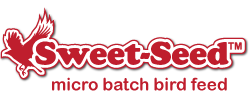The Science Behind Why Red Matters to Hummingbirds

The brightest shades of red are always associated with hummingbirds, but why? What is it about this color that attracts these birds, and how necessary is it to have red in your yard?
Seeing Red
Hummingbirds see red more clearly and vibrantly than humans, thanks to a greater concentration of cone cells in the retinas of their tiny eyes. Those cones are enhanced with red and yellow pigments that filter other colors, making red hues even brighter, so hummingbirds notice red, yellow and orange colors more quickly and easily.
Over eons of evolution – according to the California Academy of Sciences, hummingbirds have been evolving for the past 42 million years – both hummingbirds and the nectar-rich flowers they prefer have taken advantage of that visual acuity. Flowers have evolved to have brighter red hues to attract the birds, and as the birds visit rich nectar sources, they carry pollen to different blooms and help the flower reproduce. Hummingbirds have learned that red often indicates a rich nectar source, and so they repeatedly visit red flowers for their next sip. Since hummingbirds can see red shades more easily, they can quickly pick out the flowers that are most likely to be plentiful sources of nectar.
Red In Your Yard
Adding red to your yard is a great way to catch hummingbirds' attention. There are many garden-friendly options, such as…
- Different red flowers or red-tinged foliage
- Benches, chairs or other furniture painted red or trimmed with red cushions
- Red garden decorations, such as gazing balls, stepping stones, flags, etc.
Of course, many hummingbird feeders are designed with red accents, such as faux red flowers surrounding feeding ports, red-tinted glass or plastic for the nectar reservoir or simple red tops or bases. If a feeder does not have red accents, hummingbirds will still find it, but adding a red ribbon, a string of red beads or red polka dots, swirls or flowers with model paint or bright nail polish can help them notice it sooner.
The One Place You Should Never Have Red
While more red will attract more hummingbirds' attention, no red dye should ever be added to hummingbird nectar or inside feeding ports where paints or dyes may contaminate nectar. While red nectar has been popular in the past, studies have shown that the dye stays in hummingbirds' systems long past when the nectar has been metabolized, and it is still unknown what damaging impact such high concentrations of artificial dyes may have on these tiny birds. Conscientious backyard birders, however, will not take any unnecessary risks with the birds they love, and it is better to avoid any dyed nectars. Natural flower nectar, after all, is clear, and it is only the red on surrounding flowers that indicates the food source to hungry hummingbirds – that is the exact same approach you should use in your backyard.
Make It a Rainbow
One of the biggest misconceptions about the color red and its relationship to hummingbirds is that these birds will only visit red flowers, but nothing could be further from the truth. While red flowers will stand out more to hummingbirds, these birds are opportunistic feeders and will visit all sorts of flowers seeking out rich nectar, especially blooms with tubular shapes that are perfectly suited to hummingbirds needle-like bills. Different shades that include hints of red and yellow are all attractive to hummers, including pink, magenta, orange, coral, rose, peach, fuchsia, maroon, and even deeper hues such as burgundy or deep purples. Once these birds have found a hummingbird-friendly garden, they will also check out other flowers of all colors, seeking more nectar. Any rich nectar source – no matter what color it may be – will continue to attract hummingbirds.
